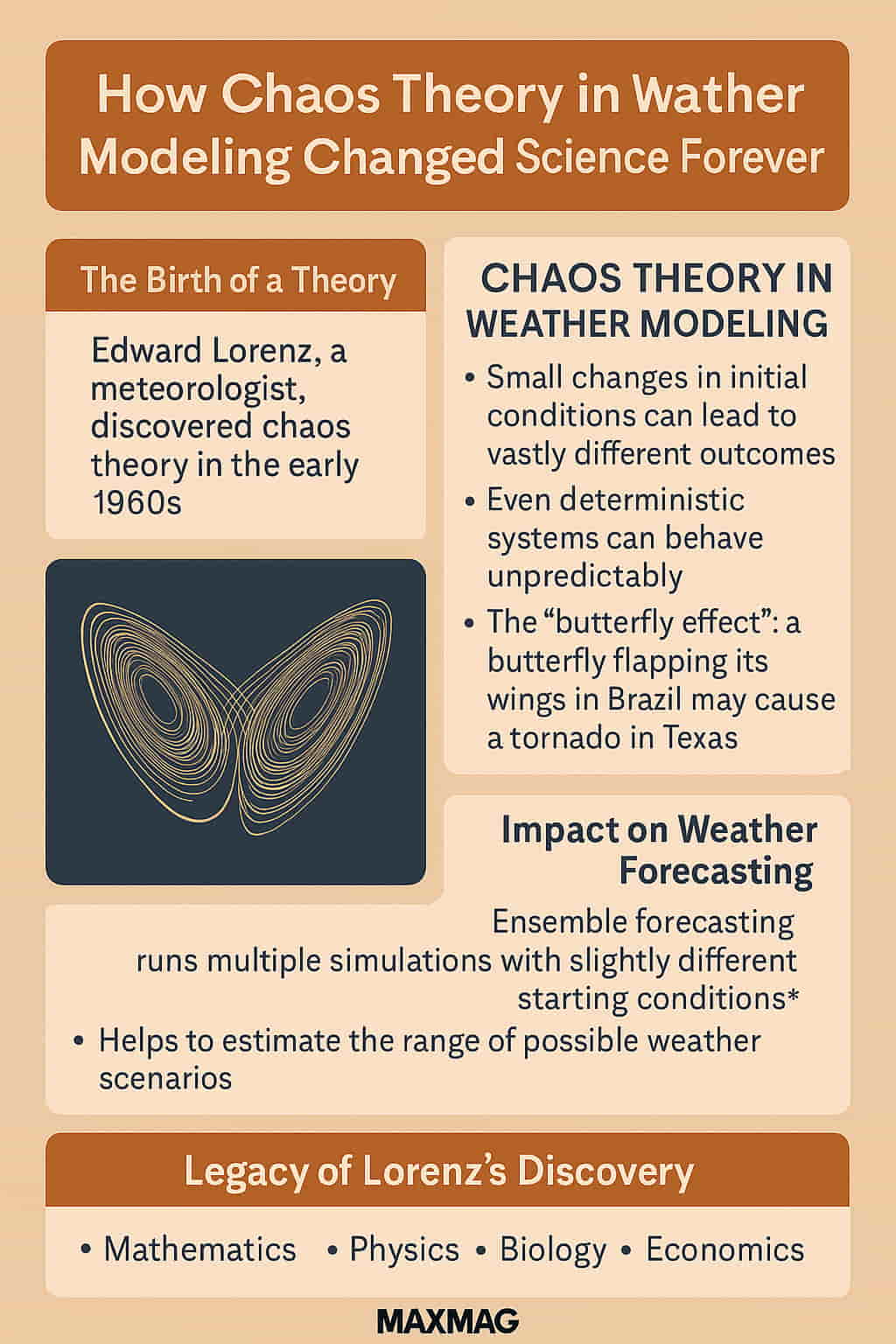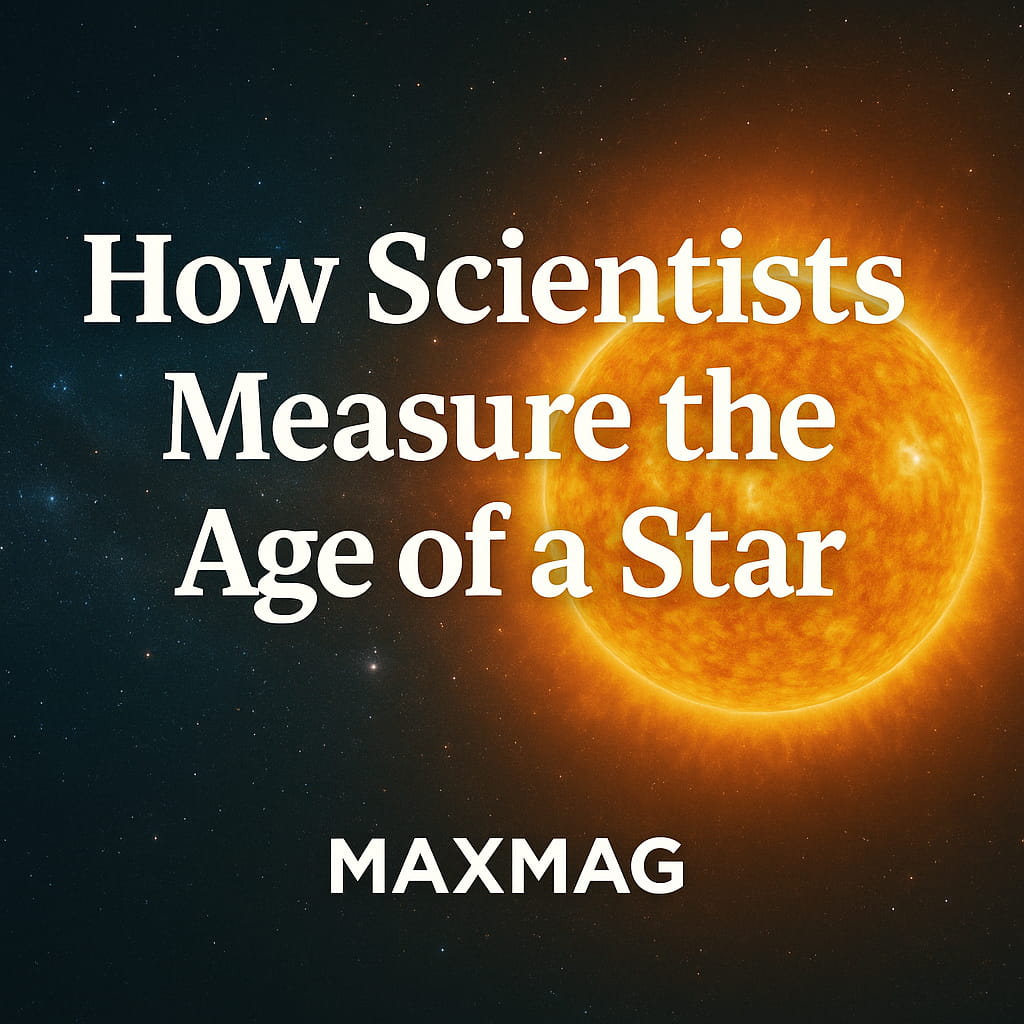
In the early 1960s, Edward Lorenz, an MIT meteorologist with a keen interest in computer modeling, made what seemed to be a small computational shortcut. While running a simulation on a primitive computer, he entered a rounded number—0.506 instead of the original 0.506127—expecting only a minor variation in the weather model output. What followed was astonishing: the resulting forecast diverged dramatically from the original, suggesting a completely different atmospheric pattern.
That moment, both accidental and historic, would lay the foundation for what is now known as chaos theory in weather modeling. Lorenz had stumbled upon a profound scientific truth: that complex systems could be extremely sensitive to initial conditions. This became famously known as the butterfly effect, and it would revolutionize not just meteorology, but also physics, biology, and even economics.
From Classical Science to Chaotic Understanding
Prior to Lorenz, weather was treated like a giant puzzle: difficult, but solvable. The prevailing assumption was that, given powerful enough computers and accurate data, long-range forecasts could eventually become perfectly reliable. Scientists operated under Newtonian determinism—if you know the present with perfect precision, you can predict the future.
Lorenz disrupted this view. He showed that nonlinear systems, like the atmosphere, behave in ways that are not just complicated, but inherently unpredictable. This unpredictability doesn’t stem from randomness but from sensitivity to initial conditions—a defining property of chaotic systems.
This realization became the seed of chaos theory in weather modeling, and it challenged one of the core assumptions of science: that predictability increases with better data.
H2: Chaos Theory in Weather Modeling
The phrase chaos theory in weather modeling may sound contradictory—how can chaos be modeled? In fact, Lorenz showed that chaos has structure. His simplified model of convection currents in the atmosphere, described using three differential equations, produced outputs that never repeated but also never flew off into complete randomness.
When he plotted the data points, they formed a distinctive shape—the Lorenz attractor, a figure-eight swirl resembling butterfly wings. This became the symbol of the butterfly effect and a visual representation of chaos theory in action.
His model illustrated that even deterministic systems could produce unpredictable outcomes, provided they were nonlinear and feedback-driven—just like weather.

Chaos Enters the Forecast
Today, operational meteorology applies Lorenz’s ideas through a process called ensemble forecasting. Instead of running a single deterministic model, forecasters input slightly varied initial conditions to produce multiple future scenarios. These ensembles allow scientists to estimate the probability of different weather outcomes.
For example, when forecasting a hurricane’s path, weather services don’t rely on just one projected line. They use a “spaghetti model” made of many lines—each representing a possible path derived from different initial conditions. This method is a direct application of chaos theory in weather modeling, and it informs how emergency services prepare for storms.
Trusted institutions like NOAA and the National Weather Service have embraced ensemble modeling as the gold standard, especially in high-stakes forecasts like floods, snowstorms, and hurricanes.
Edward Lorenz’s 1963 Breakthrough
In his pivotal paper Deterministic Nonperiodic Flow (1963), Lorenz introduced the chaotic nature of atmospheric systems. The equations were simple, but the behavior was anything but. Instead of converging to equilibrium or repeating patterns, the solutions jumped from one state to another, bounded but never repeating. This was a groundbreaking insight.
Before this, “unpredictability” was often blamed on measurement error or data limitations. Lorenz showed that unpredictability was baked into the equations themselves—that a deterministic system could generate outcomes indistinguishable from randomness.
This paper seeded what would later bloom into the interdisciplinary field of chaos theory—a discipline with profound implications for how we understand time, nature, and systems of all kinds.
Cross-Disciplinary Influence of Chaos Theory
While Lorenz focused on meteorology, his ideas sparked investigations across a wide spectrum of fields:
- In biology, chaos theory explains erratic heartbeat patterns and brain wave irregularities.
- In ecology, it models population booms and crashes in species.
- In economics, it accounts for the unpredictable fluctuations of financial markets.
- In astrophysics, it helps describe gravitational interactions and orbital resonances.
- In computer science, it contributes to algorithmic randomness and data encryption.
The idea that complex, deterministic systems can behave unpredictably has given rise to entirely new modeling techniques, software simulations, and predictive tools.
The Butterfly Effect: More Than a Metaphor
Though widely known as a pop-culture concept, the butterfly effect remains scientifically robust. It refers to the idea that a small input—a butterfly flapping its wings—can eventually influence large-scale outcomes, like a tornado forming weeks later.
In 1972, Lorenz famously titled a talk: “Does the Flap of a Butterfly’s Wings in Brazil Set Off a Tornado in Texas?” Though poetic, it underscored a real issue: tiny uncertainties in weather measurements can grow exponentially, making long-term prediction unreliable.
Importantly, chaos theory doesn’t deny cause and effect—it emphasizes how fragile those causal chains can be. In real terms, this means that weather predictions longer than 10 days become increasingly probabilistic, not definitive.
Chaos in the Age of AI and Supercomputers
Today’s supercomputers process billions of data points every second. Satellite observations, oceanic sensors, atmospheric drones, and AI-driven models feed into weather simulations with increasing accuracy.
Yet even with all this technological progress, Lorenz’s insight still applies. No matter how precise the measurements, the tiniest error can grow into enormous forecasting divergences. That’s why meteorologists now present forecasts in terms of probability: a 40% chance of rain, an 80% confidence interval on a hurricane path.
In this sense, chaos theory remains not just relevant—it is the philosophical backbone of modern forecasting.
Lorenz’s Enduring Legacy
Edward Lorenz passed away in 2008, but his influence resonates across disciplines. He received numerous accolades, including the Kyoto Prize and membership in the National Academy of Sciences.
More than honors, his real legacy is conceptual. He reshaped how we think about predictability, uncertainty, and the limits of knowledge. His work forces us to accept that some systems are forever beyond complete comprehension, not because we lack tools, but because of the systems’ nature.
By embracing uncertainty rather than denying it, Lorenz helped build a more resilient science—one that works with, rather than against, the chaotic complexity of the world.
Chaos Theory and Climate Science: A Broader Application
While chaos theory is often associated with short-term weather prediction, its influence on climate science is equally profound. One of the biggest misconceptions is that if weather is chaotic and unpredictable, then climate forecasts must be unreliable too. In reality, the opposite is true.
Weather refers to short-term atmospheric conditions, whereas climate describes long-term statistical trends. While we can’t predict the exact temperature on a particular day years in advance, we can model long-term climate behavior with greater confidence. This is because chaos operates differently across time scales.
Climate models rely on boundary conditions—such as levels of greenhouse gases, solar activity, and oceanic heat exchange—that change slowly. These models incorporate chaotic behavior but are able to produce statistically reliable projections over decades. Thanks to chaos theory in weather modeling, scientists know to focus on ranges and trends, rather than absolutes.
Institutions like NASA’s Climate Division and the Intergovernmental Panel on Climate Change (IPCC) apply ensemble modeling, scenario analysis, and probabilistic forecasting—all approaches rooted in chaos theory.

Common Misconceptions About Chaos
Despite its scientific rigor, chaos theory is often misunderstood in both the media and public discourse. Here are a few clarifications:
- Chaos is not randomness. It is deterministic — meaning it follows rules — but it is sensitive to initial conditions. This makes outcomes unpredictable without being random.
- Chaos does not mean we can’t predict anything. Short-term predictions are still highly useful, especially with ensemble models. In fact, chaos theory enables better risk management, not helplessness.
- The butterfly effect is not magical. It’s a metaphor illustrating a technical principle: small variations can lead to vastly different outcomes over time in nonlinear systems.
Understanding these nuances is key to appreciating how deeply chaos theory informs not just weather forecasting, but broader scientific thinking.
How Lorenz Is Taught Today
In modern science curricula, Edward Lorenz is no longer a fringe figure—he is revered as a pioneer. His work is taught in courses ranging from meteorology and physics to computer science and economics. Entire college modules are devoted to nonlinear dynamics and chaos, where students study systems like the Lorenz attractor, the double pendulum, or population models like the logistic map.
Textbooks on differential equations now routinely include a section on chaos theory in weather modeling, emphasizing Lorenz’s contributions. High school science classes even introduce the butterfly effect to spark interest in complexity science.
Additionally, tools like Python, MATLAB, and Mathematica make it easier for students to simulate chaotic systems themselves, bringing Lorenz’s models to life in interactive ways.
The Enduring Power of Chaos Theory
The beauty of chaos theory lies in its paradox: it reveals order in disorder. It shows us that systems can be governed by exact rules and still be unpredictable. It teaches humility—reminding us that even the best models have limits. And it opens doors—allowing us to explore complexity rather than fear it.
Whether it’s the unpredictability of a hurricane, the sudden collapse of an economy, or the swing of a double pendulum, chaos theory in weather modeling has given us a language for describing the unpredictable, a lens for understanding sensitive systems, and a framework for working with uncertainty instead of fighting it.
Edward Lorenz didn’t just change how we model the weather. He changed how we see the world.
FAQ
Q: What is chaos theory in weather modeling?
A: It refers to the idea that small changes in initial atmospheric conditions can lead to significantly different weather outcomes, making long-term forecasts inherently uncertain.
Q: Why is the butterfly effect important?
A: It symbolizes the sensitivity of complex systems. A small change in one part of the system can have massive effects elsewhere, particularly in nonlinear, chaotic systems.
Q: Is chaos the same as randomness?
A: No. Chaos is deterministic but unpredictable. The system follows clear rules, but its outcomes are highly sensitive to initial conditions.
Q: How do meteorologists use chaos theory today?
A: Through ensemble modeling. They run multiple simulations with slightly varied inputs to assess the range and probability of future weather scenarios.
Q: Can chaos theory help with climate change?
A: Indirectly, yes. By modeling multiple possible futures, scientists use chaos-informed methods to prepare societies for different climate risks and policy outcomes.
Q: How did chaos theory influence computer science?
A: It contributed to the development of pseudorandom number generators, cryptographic algorithms, and new optimization techniques in artificial intelligence.







